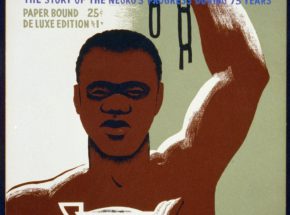

Louis Henri Sullivan was born on September 3, 1856 in Boston, Massachusetts. He spent some of his early years learning about nature on his grandparents’ farm in South Reading just outside of Boston, while commuting twenty miles to attend Rice Elementary School in the South End neighborhood of Boston. After graduating from Rice Elementary School in 1870 he attended the Boston English High School also in the South End neighborhood, but left there in 1872 at age 16 to enter the Massachusetts Institute of Technology to study architecture under William Ware. and Eugene Letang. After just one year he left MIT and went to live with his grandparents in Philadelphia, Pennsylvania, and while there went to work for architects Frank Furness and George Hewitt. He spent the summer of 1873 in Philadelphia, then left after a disagreement with George Hewitt. He then went to visit his parents who had relocated to Chicago, Illinois. and while there he obtained work with “the father of the skyscraper”, William Le Baron Jenney.
In 1874 he was off to Paris, France to study at the Ecole des Beaux-Arts, but that too only lasted for a short time. He returned to Chicago in 1875 and obtained a job as a draftsman in the office of Joseph S. Johnston & John Edelman. In 1876 Johnston & Edelman received a commission for the interior design of the Moody Tabernacle. The job was immediately turned over to Sullivan to execute, and it was completed to critical acclaim.
In 1879 Sullivan left Johnston (Edelman had left for Cleveland, Ohio in 1876) and went to work in the office of Dankmar Adler, and by 1883 the name of the firm became Adler & Sullivan. The firm of Adler & Sullivan designed over 180 buildings during its existence, primarily residential, and office buildings. Also included were theaters and auditoriums along with a few burial vaults. Among the most notable are the Auditorium Building, where Sullivan would keep his office for 29 years, the Stock Exchange Building and the Schiller Building in Chicago, the Wainwright Building in St. Louis, Missouri, the Guaranty Building in Buffalo, New York and the Transportation Building for the World Columbian Exposition held in Chicago in 1893.
In 1887 a young draftsman named Frank Lloyd Wright joined the firm of Adler & Sullivan. Sullivan immediately became Wright’s mentor and Wright referred to him as his Lieber Meister (beloved master). It was under the inspirational and philosophical leadership of Sullivan that Wright and his contemporaries formed the basis of the Prairie School of Architecture. His philosophy that “form follows function” became one of the basic principles practiced by the Prairie School architects. Besides mentoring Wright at his firm, Sullivan also employed Prairie School architects George Grant Elmslie and William Gray Purcell for a period of time in each of their careers.
In 1895 Dankmar Adler left the partnership over a dispute to hire his two sons. He took a job with the Crane Elevator Company as Sullivan .continued the practice alone. Over the course of the next five years Sullivan’s practice began to decline. But during this period he designed one of his most famous buildings, a department store for Schlesinger and Mayer (now Carson Pirie Scott & Company) in Chicago. After the turn of the century his practice consisted mainly of small banks and commercial buildings throughout the Midwest. Even though the number of commissions was markedly smaller, each one remained true to his ideology of design and the use of detailed ornamentation. His crown jewel of this period was the National Farmers’ Bank in Owatonna, Minnesota, completed in 1908. Sullivan utilized the talents of his then employee George Grant Elmslie for the design of the ornamentation and artist Oscar Gross for the landscape murals.
Sullivan continued designing banks in the Midwest but by 1918 he was virtually broke and was forced to leave his office in the Auditorium Building. He existed on his fees from his commission for the Farmers’ and Merchants’ Bank in Columbus, Wisconsin in 1919, and some occasional financial help from Frank Lloyd Wright and other friends. With his health deteriorating from kidney and heart diseases, he died in his sleep on April 14, 1924. He was laid to rest next to his parents in Graceland Cemetery in Chicago on April 16, 1924, not far from the Ryerson and Getty tombs that he had designed over 30 years
www.prairiestyles.com/lsullivan.htm
